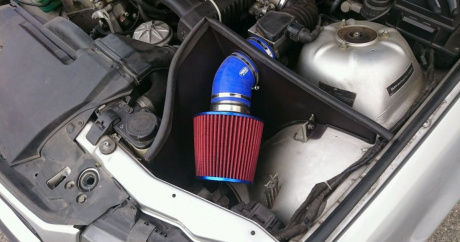
Your car needs air and fuel for generating power and then moving. The fuel tank supplies the fuel, whereas the air gets sucked from the surrounding, which is the primary job of the intake system. When the air is sucked in, the vehicle needs to ensure that only the air comes through, and no one wants dust, debris, and insects in the engine.
The air filter is placed in the middle of the intake system. The job of the air filter cover is to enclose the air filter into the airbox, and it needs to be opened and closed when the air filter is replaced. There are several functions performed by the air filter cover, which include acting as a silencer and keeping the hot air from entering.
What is an air filter?
As humans require oxygen to breathe, a car requires oxygen for its combustion process. The air filter has a significant job to do, which includes preventing any dust, debris, particles, and sand from reaching the vehicle's engine. It also helps to ensure a good mixture of air and fuel to support performance.
There are different shapes and sizes in which the car filters can be found. The shapes include circular, cylindrical, or panels. The filters are made up of pleated materials that can filter the air. These can either be synthetic paper, cotton or foam.
What is the use of the air filter cover?
The air is enclosed inside the air filter cover, and aside from being simple, there are three necessary functions that the air filter cover performs.
-
It keeps the hot air from entering.
In order to generate power, car engines need power. In reality, car engines require oxygen in the air and not the air itself. Hot air can hold less oxygen as it is less dense, which means that it cannot generate much power. This is why no one wants to suck hot air into the engine.
-
It helps to keep the air filter in place.
You may not have noticed, but the air filters don’t come with clamps or drills to get locked. They can be popped into the airbox, and that is why we need an air filter cover so that the air filter can be locked in place.
-
It acts as a silencer.
The manufacturers purposely engineered the air filter cover so that the air intake sound could be silenced. Although some people prefer having an added noise, most drivers go for less noise.
What are the disadvantages of not having an air filter cover?
-
Potential damage to the engine
When you don't have an air filter cover in place, the air filter may get jolted out of its location. Once the filter is not in its place, insects, dust, and debris can enter the engine. Therefore, it can cause wear and tear damages and even engine failure.
-
Reduced performance
Hot air with less oxygen may flow when the filter is no longer closed. It means that your engine may not produce as much power, although you may not have this issue if the vehicle is moving.
-
Loud engine sound
When you keep the air filter cover off, you will get more sound. You might be getting the sound of air rushing into the engine of the vehicle. The sound will be noticeable, so some people like it while others don't.
Final Thoughts
There is no doubt that an air filter can make a massive difference to your vehicle's performance. A clean and correctly installed filter will enhance fuel economy, increase engine life, and lower emissions. The disadvantages of removing an air filter cover are pretty significant because you may risk sucking hot air, resulting in reduced performance and even your air filter popping out of its place.
Same articles

Bridgestone Potenza Re980as vs Michelin Pilot Sport A/S 3 (W- or Y-Speed Rated): What is better to choose?
GuidesIt's time to replace the all-season tires on your car, and you're trying to decide between

2020 Honda Ridgeline: Is it worth it?
GuidesThe 2020 Honda Ridgeline carves out its own niche among pickup trucks. It's not as burly as a full-size truck, but it has more towing and hauling capability than most crossover SUVs. This...

What are car speakers for and should they be installed?
GuidesCar speakers serve two main purposes. The first is to provide high-quality sound reproduction of music, and the second is to act as a safety measure by amplifying sounds from outside the vehicle...
